
Try LTspice series introduces the use of LTspice
In the TRAN analysis, which is a time axis analysis, you can check the signal level as time changes like an oscilloscope.
On the other hand, the FFT function is useful when you want to check the frequency component of a signal, and you can check the distortion and noise component of the circuit by simulation.
This time, I will introduce this FFT function.
What is FFT?
FFT (Fast Fourier Transform) is a Fast Fourier Transform, which is an algorithm that performs fast computation on a computer.
Like a spectrum analyzer, SPICE displays the frequency components and level (power) of the signal. The FFT function is built into the Waveform Viewer because it performs calculations based on data obtained from the TRAN analysis (time axis).
Try FFT function
Procedure
This time, as an example, we will confirm the signal waveform, which is a composite of 3 sine waves with different frequencies and magnitudes, by TRAN analysis and confirm the frequency distribution using the FFT display function.
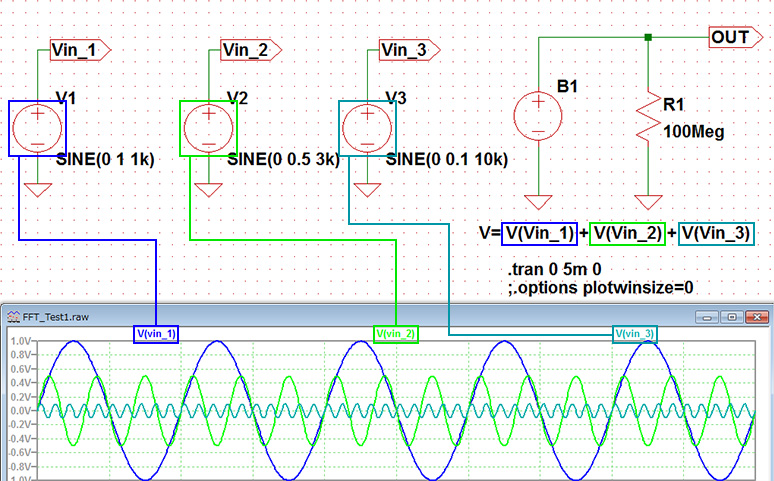
The results of the TRAN analysis are shown below.
Only looking at the waveform of the OUT terminal does not reveal the frequency component and size.

So let's try the FFT display function.
Choose View - FFT from the menu bar.
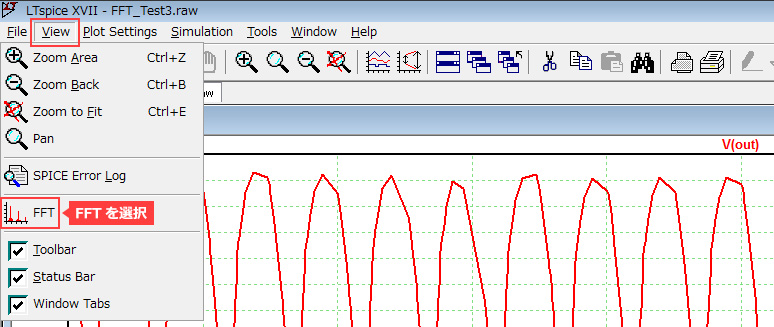
Then, the box as shown in the following figure will appear, so please press OK normally.
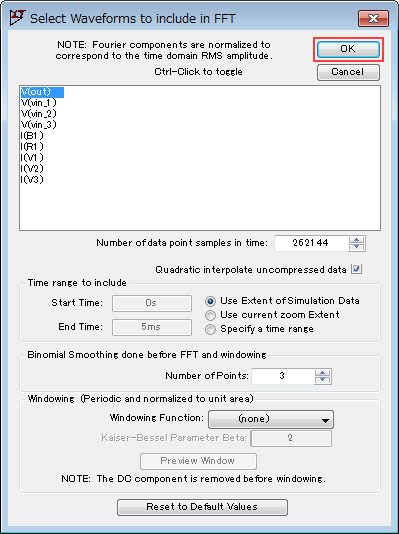
The FFT display results are shown below.
A logarithmic graph with signal level (dB) on the vertical axis and frequency (Hz) on the horizontal axis was obtained.
There are peaks at frequencies of 1kHz, 3kHz, and 10kHz, and we were able to grasp the waveform components and size.
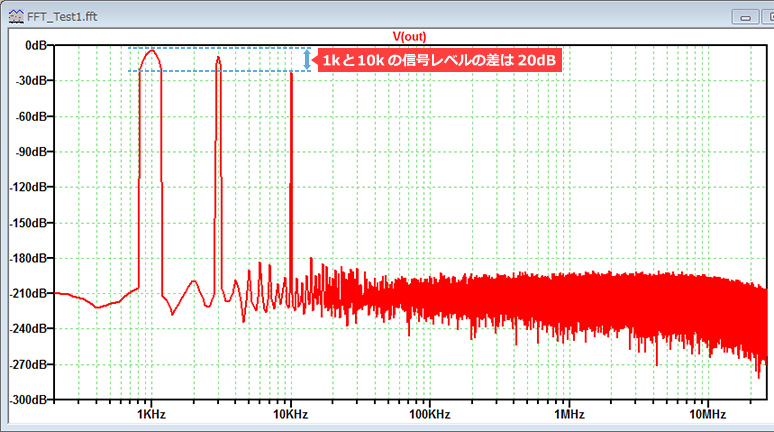
Point of use.
When using the FFT function, it is recommended to set the command ". options plotwinsize = 0". The result is that the output of the analysis is not compressed and the noise floor is reduced.
Also, when the "Maximum Time Step" of the TRAN command is shorter than 1/100 of the signal's one cycle, results of a good FFT are obtained ; however, when the short setting is shortened and the simulated time takes a few times, it is adjusted with a balance.
I have not specified the plotwinsize in. options, and I have simulated the default Maximum Time Step.
Despite the FFT of the composite sine wave, the noise floor of the base is large and peaks are visible at unintended frequencies.
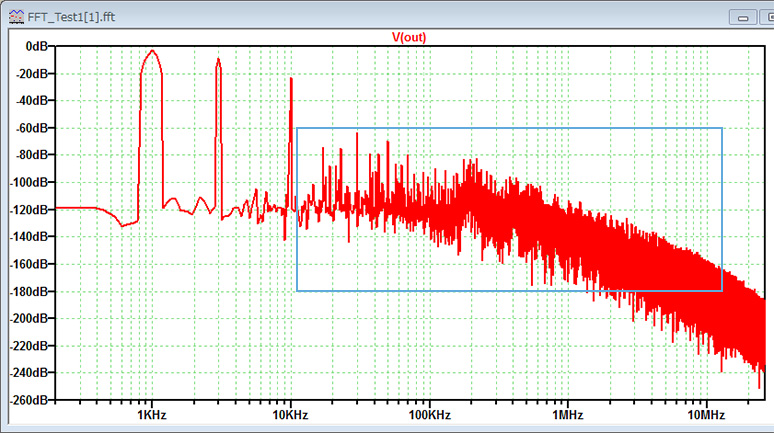
Look at the output voltage signal of the power supply IC with FFT!
Previously in the article “Try LTspice - DC-DC converter activity”, we have checked the level of ripple voltage of the output voltage. This time let’s check the frequency component with the FFT function.
The circuit uses the LT8640 Demo file. FFT analysis requires steady state results, so check the ripple voltage after the power supply is turned on.
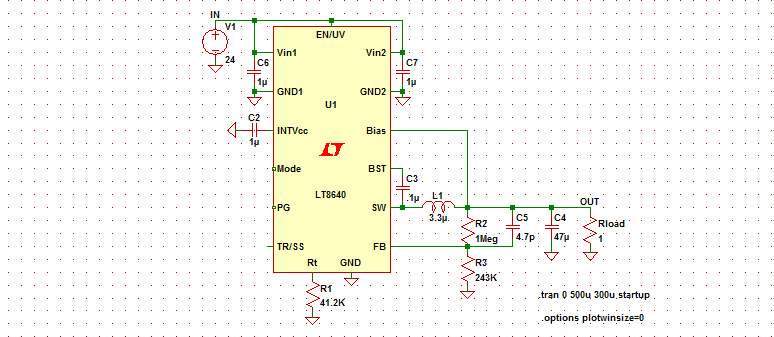
The ripple component of the output voltage is shown below.
By FFT analysis, not only the 1MHz switching frequency component but also the 2x, 3x and even and odd frequency components can be confirmed.
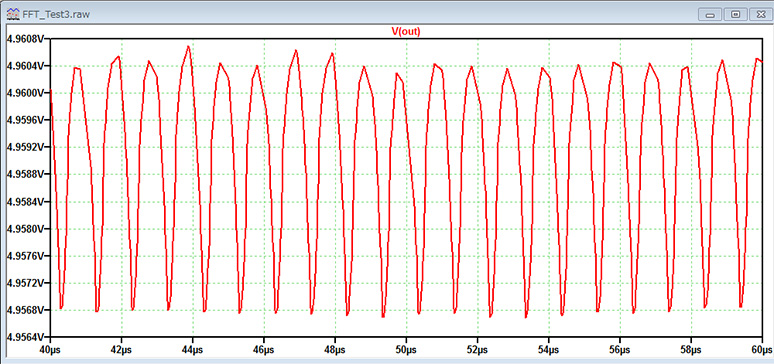
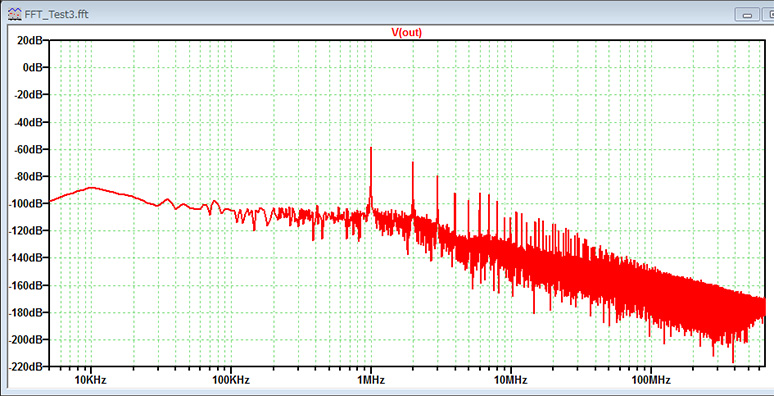
Noise from the power supply circuit can affect peripheral circuits and EMI testing.
By understanding the frequency components using the FFT function, noise countermeasures such as filter design can be studied by simulation.
We recommend you try the FFT function.
The LTspice demo file we examined
FFT_Simulation__1.zip
It contains the 2 simulation files we run.
LTspice download
LTspice can be downloaded through below URL link.
https://www.analog.com/jp/design-center/design-tools-and-calculators/ltspice-simulator.html
